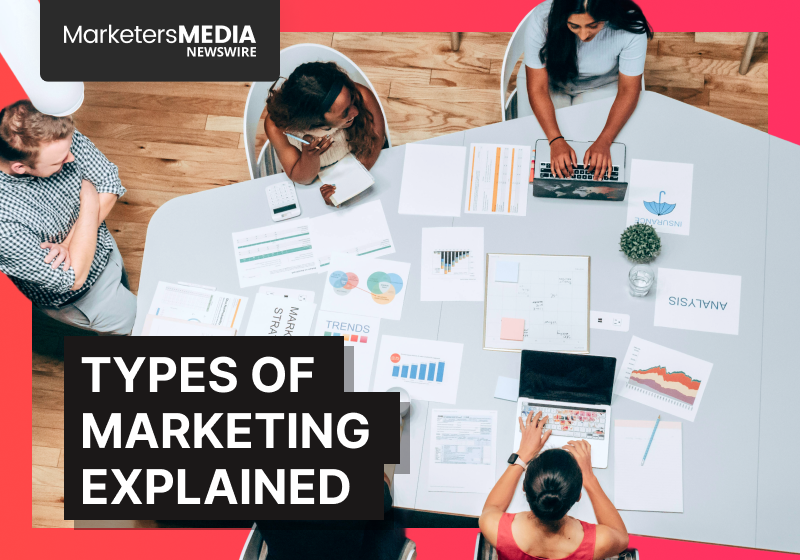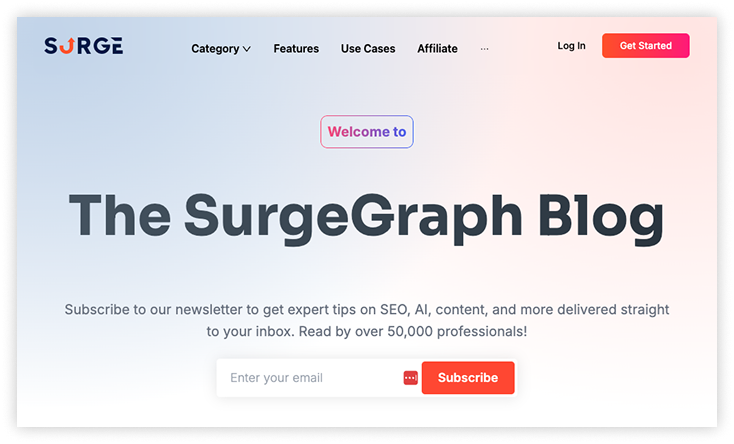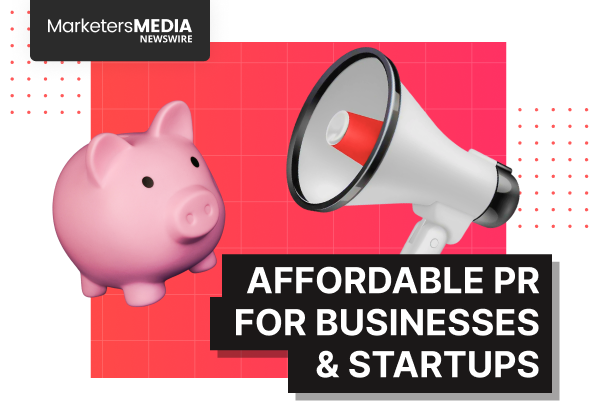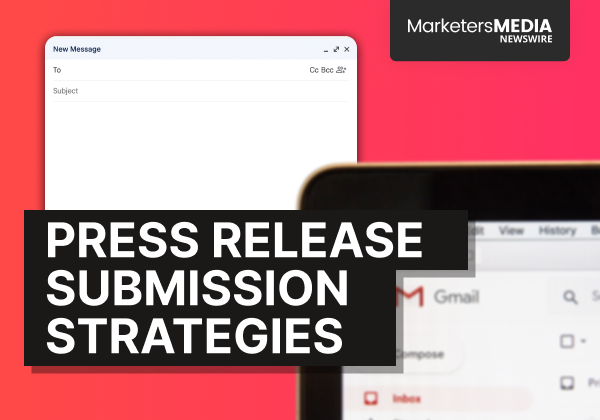With so many ways to reach customers nowadays, it’s hard to know which marketing approach makes more sense for your business. Should you focus on TikTok or email? SEO or street billboards? And do people still read print ads anyway?
The truth is, there’s no single right answer. Every marketing strategy has its place—it just depends on your goals, your audience, and your resources.
This guide breaks down the main types of marketing you should know, from tried-and-true traditional methods to newer digital tactics. You'll learn how each one works, when to use it, and which ones might work best for your business.
Let’s jump in.
What is Marketing
Marketing goes far beyond selling products. It encompasses everything from understanding customer needs to building relationships that last.
At its core, marketing involves identifying what people want, creating solutions that address those desires, and communicating the value of those solutions effectively. The goal? Connecting with the right people at the right time with the right message.
The American Marketing Association defines marketing as "the activity, set of institutions, and processes for creating, communicating, delivering, and exchanging offerings that have value for customers, clients, partners, and society at large."
But let's be honest – marketing is also an opportunity to showcase personality, creativity, and connection. It's where business objectives meet human psychology. Sometimes it's analytical, sometimes it's intuitive, but it's always focused on building relationships.
Before diving into specific marketing types, it's helpful to understand two fundamental approaches that shape most marketing strategies: inbound and outbound.
Inbound vs. Outbound Marketing
These two approaches represent fundamentally different philosophies toward attracting customers.
Inbound Marketing
Inbound Marketing pulls people toward your business naturally. It focuses on creating helpful content and experiences tailored to your audience.
When done right, potential customers find you through channels like blogs, search engines, and social media because you're providing value before asking for anything in return.
According to Backlinko, inbound marketing gets 54% more leads than outbound—and costs 62% less. You save money, reach people who actually care, and avoid wasting effort on the wrong audience.
For example, a software company might implement inbound marketing by publishing helpful guides about industry challenges, offering free tools that solve common problems, and hosting webinars that provide valuable insights—all while subtly demonstrating how their products fit into the solution.
Outbound Marketing
Outbound marketing is the more traditional approach where you actively reach out to potential customers with your message. Instead of waiting for them to find you, you're putting your message in their path.
This includes stuff like:
- Cold calling potential customers (yes, people still do this)
- Sending direct mail to targeted lists
- Running TV and radio ads
- Putting up billboards where lots of people will see them
Some marketers act like outbound is totally outdated in our digital world, but that's not really true. It still works really well for certain goals. If you're opening a new restaurant in a neighborhood, a well-placed billboard might still be the best way to let locals know you exist.

The smartest marketing strategies often mix both approaches. After all, why limit yourself to just one way of reaching potential customers?
B2C vs. B2B Marketing
Another big difference in marketing approaches depends on who you're trying to sell to: are they regular consumers buying stuff for themselves (B2C) or other businesses (B2B)?
B2C Marketing
Business-to-consumer marketing targets individual people making personal buying decisions. These purchases usually involve:
- Shorter decision-making time (sometimes impulse buys)
- More emotional reasons for buying
- Lower prices (usually)
- Just one person making the call
B2C marketing tends to focus on emotional connections, lifestyle benefits, and immediate value. Think about Nike - they rarely talk about their shoe materials or manufacturing processes. Instead, they sell you the feeling of being an athlete, of pushing your limits, of greatness.
Customer reviews are huge here too - 93% of consumers say online reviews affect their purchasing decisions. We've all been there, scrolling through Amazon reviews at 11 PM, right?
B2B Marketing
Business-to-business marketing targets other companies as customers. These purchases usually involve:
- Much longer decision-making cycles (sometimes months or even years)
- Multiple people who need to sign off (the dreaded "buying committee")
- Higher price tags
- Focus on ROI and business outcomes
B2B marketing emphasizes logical benefits like saving money, improving efficiency, and gaining competitive advantages. The content tends to be more detailed, addressing specific business challenges and backing up claims with hard data.
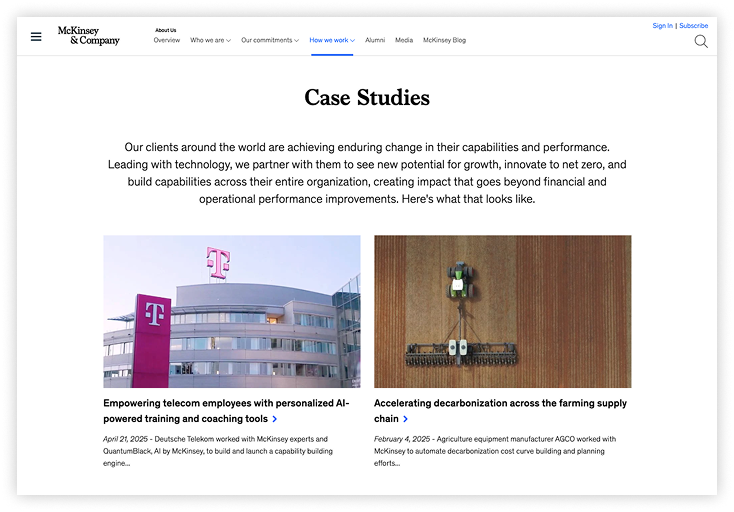
And here's a wild stat: according to 6sense, B2B buyers typically complete 70% of their decision-making process before ever talking to a sales rep. This really shows why educational content is so crucial in B2B marketing - you need to be helpful during that research phase.
With these fundamental distinctions in mind, let's examine specific marketing channels, starting with the traditional approaches that have proven effective for decades.
Traditional Marketing
Before technology and the Internet transformed the marketing landscape, traditional marketing was the primary way companies would advertise their goods to customers.
These methods have been developed over decades and formed the foundation of marketing as we know it today. The main types of traditional marketing strategies include:
1. Print Marketing
Print marketing involves newspapers, magazines, brochures, flyers, and other physical printed materials. While newspaper circulation has declined in recent years, print advertising continues to serve a purpose for local businesses and brands targeting specific demographics.
Print marketing offers:
- Tangible materials that customers can keep
- Local targeting through community publications
- Reach to demographics who consume less digital media
A notable example of print marketing is inflight magazines found on airplanes. These publications offer advertisers access to a captive audience with typically higher income levels.

Luxury hotel chains, high-end watch brands, and premium car manufacturers often advertise in these magazines to reach business travelers and vacation planners who have time to engage with the content during their flight.
2. TV & Radio Advertising
TV and radio advertising reach broad audiences through scheduled programming. Yes, streaming has changed how we consume media, but traditional broadcast channels still reach tons of people.
Take the Super Bowl—it consistently commands over 100 million viewers and premium advertising rates exceeding $8 million for a 30-second spot.
Radio also holds its ground, especially during commute times. According to Nielsen, radio still reaches 91% of American adults every month—pretty impressive for a medium many consider outdated.
3. Outdoor Advertising
Outdoor marketing includes billboards, transit ads (buses, subways, taxis), and signage in public spaces. These formats function by placing messages in high-traffic areas where they'll be seen repeatedly.
For instance, McDonald's "Follow the Arches" campaign used portions of their logo as directional guides to nearby restaurant locations, demonstrating how companies can use outdoor advertising creatively.
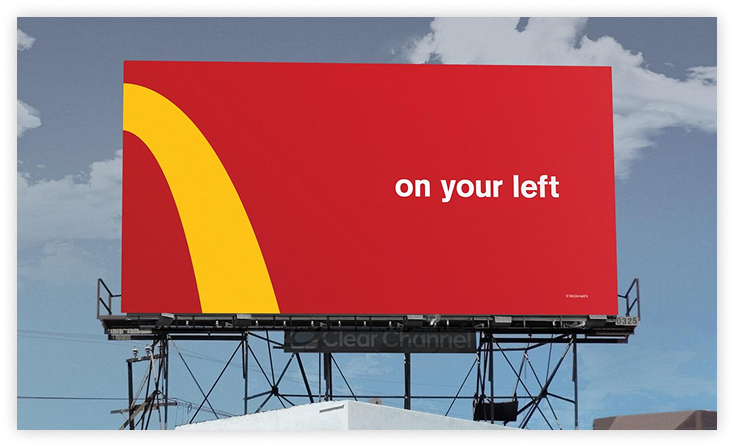
Billboard advertising has also incorporated digital technology in recent years, enabling changing displays and sometimes interactive elements.
4. Telemarketing
Telemarketing involves contacting potential customers directly by phone. While often considered intrusive in consumer markets, it remains a common practice in B2B contexts and certain B2C industries like financial services.
Telemarketing allows companies to:
- Reach decision-makers directly
- Have two-way conversations
- Gather immediate feedback
- Explain complex products or services
Many B2B companies employ inside sales teams that use telephone outreach as part of their sales process, particularly for high-value products and services.
5. Direct Mail
Direct mail marketing involves sending physical promotional materials directly to potential customers' mailboxes. These materials can include catalogs, postcards, brochures, coupons, and promotional letters.
For example, a local gym might send postcards to nearby neighborhoods offering a free week trial membership to new customers. Similarly, retail stores often mail seasonal catalogs or coupon booklets to previous customers to encourage repeat business.
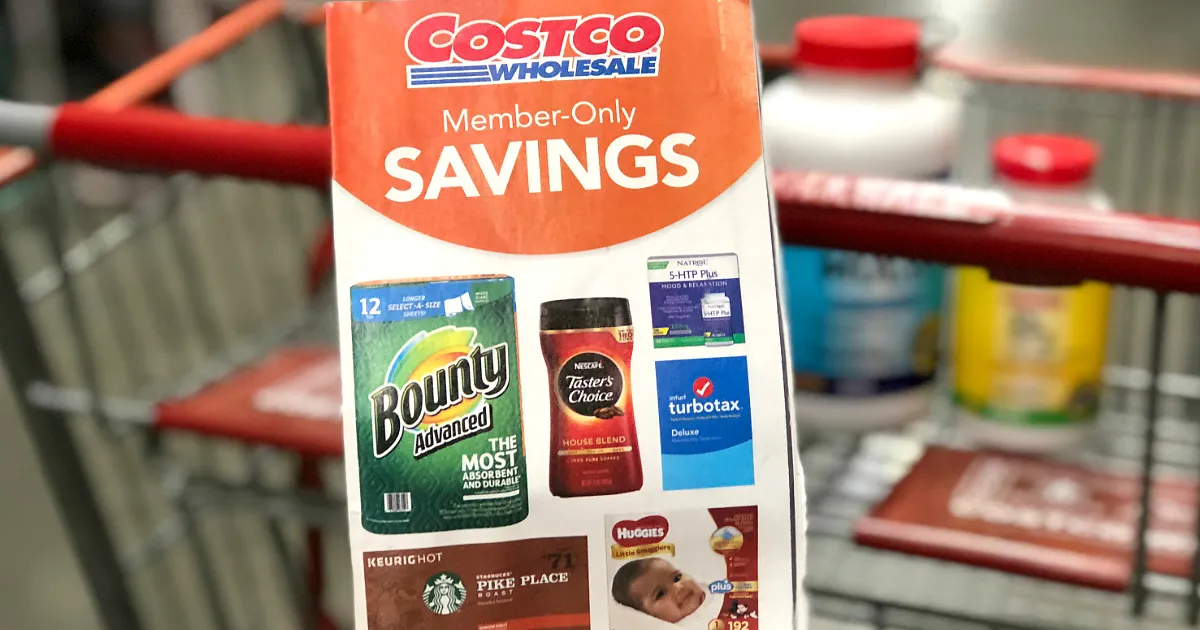
Digital Marketing
Now, let’s shift gear to digital marketing. These are the strategies happening online as opposed to in the physical world.
As we spend more time on our devices each year, these approaches have become essential to most marketing plans—even for traditionally offline businesses.
1. Search Engine Optimization (SEO)
SEO helps people find you on Google (or other search engines) when they’re already looking for something you offer. Instead of paying to show up, you earn your spot by making your content useful and relevant.
Good SEO involves:
- Researching keywords your target audience actually uses
- Creating quality content that answers their questions
- Making sure your website loads quickly and works well on mobile
- Getting backlinks from trusted websites to build credibility
Let’s say you run a local gardening business—you could write blog posts like “How to grow herbs at home” or “Easy plants for beginners.” When someone searches for those tips, boom—your website shows up, and they discover you without you having to spend on ads.
And it works: the #1 result in Google grabs 27.6% of all clicks. That’s more than one in four people choosing the top spot, while results further down get dramatically less attention.
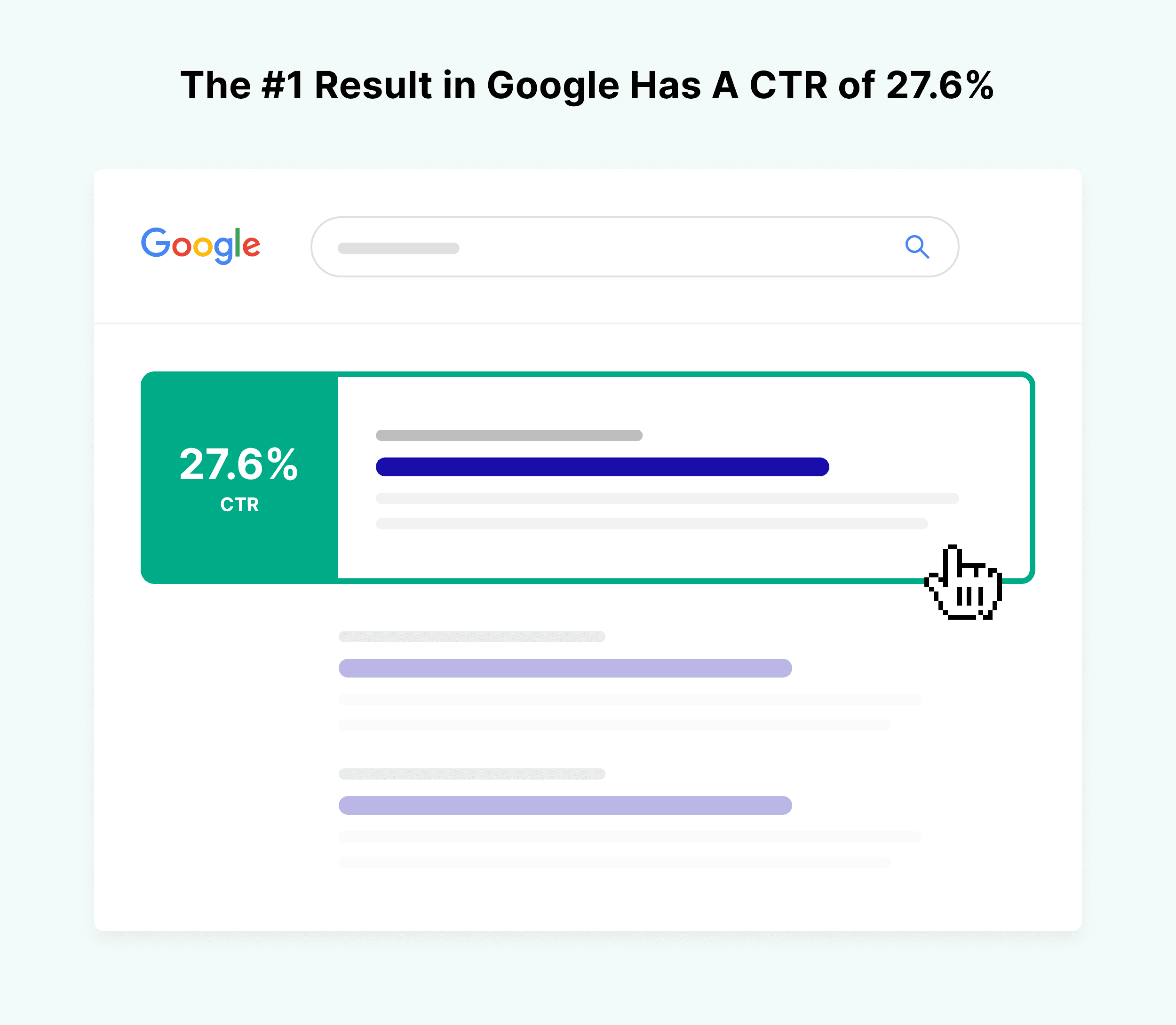
2. Social Media Marketing
Social media marketing builds brand awareness and customer relationships through platforms like Facebook, Instagram, LinkedIn, Twitter, and TikTok. These channels allow for both organic (unpaid) content and paid advertising.
Different platforms serve different marketing objectives:
- Instagram works well for visually-oriented businesses like restaurants, fashion, and travel
- LinkedIn excels for B2B marketing and professional services
- TikTok reaches younger audiences with creative, short-form video
- Facebook offers the broadest demographic reach and sophisticated ad targeting
According to Sprout Social, 78% of consumers feel more connected to brands they follow on social media. This highlights how these platforms build relationships beyond simple advertising - they're digital communities where your brand can be part of the conversation.
3. Influencer Marketing
Influencer marketing partners with individuals who have dedicated social followings to promote products or services. This approach leverages the trust these influencers have built with their audiences—and it's one of the fastest-growing areas of digital marketing today.
These collaborations range from celebrity endorsements to partnerships with micro-influencers (those with smaller but highly engaged niche audiences). Many brands actually see better ROI when they work with the right types of influencers—especially those whose followers closely match their target customers.
Fenty Beauty does this really well. Instead of just running ads, they send products to beauty YouTubers and TikTok creators who test them out on camera. It’s a simple way to build hype and show the products in action—straight from people their audience already follows.
4. Email Marketing
Email might be one of the oldest digital marketing tools—but it still works incredibly well. Why? Because it lets you speak directly to people who’ve already shown interest in what you offer.
In fact, research from Litmus Software shows email marketing that for every $1 spent on email marketing, you get about $36 back. Not bad at all.
The trick? Send the right message (Personalization) to the right people (Segmentation). Instead of blasting the same email to everyone, you tailor it based on what they’ve bought or what they care about.
For example, a clothing store might send one promo to customers who shop for men’s clothes, and a different one to those who buy women’s. It’s simple—but way more effective.
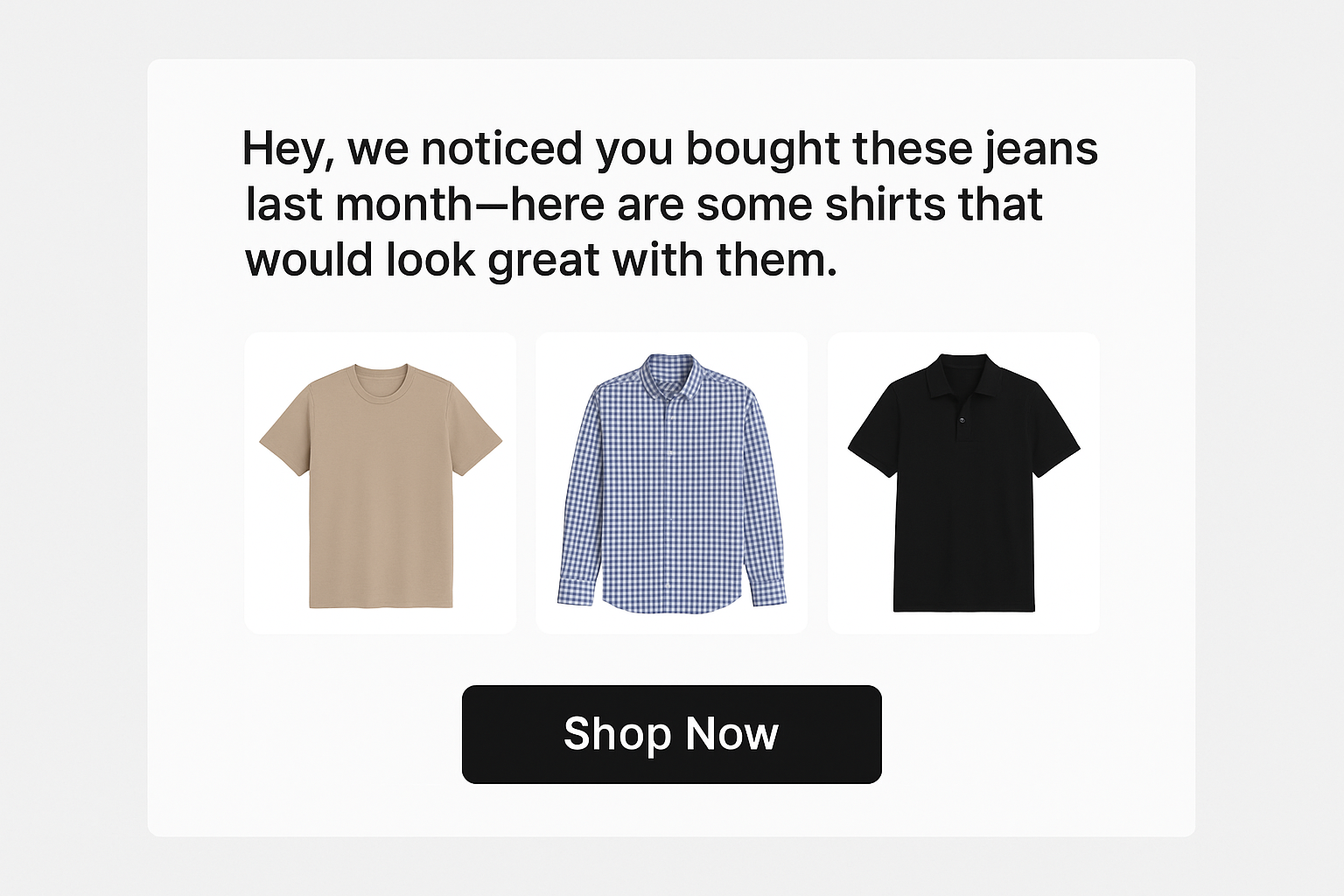
5. Pay-Per-Click (PPC) Advertising
PPC advertising displays your ads on search engines and other digital platforms, charging you only when users click through to your website. Google Ads is the biggest PPC platform, followed by Microsoft Advertising and various social media ad platforms.
PPC offers some cool advantages:
- Immediate visibility (unlike SEO, which takes time to build up)
- Precise targeting by demographics, interests, and search intent
- Measurable results with clear ROI tracking
- Complete budget control—you set exactly how much to spend
A PPC campaign for a wedding photographer might target phrases like "wedding photographer [city name]" during peak engagement season, putting their services in front of people actively looking for exactly what they offer, right when they need it most.
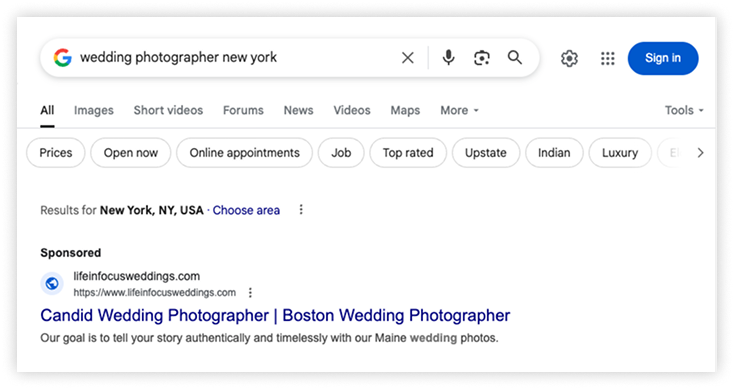
6. Content Marketing
Content marketing creates and distributes valuable, relevant content to attract and engage a target audience. This approach focuses on helping rather than selling directly, building trust, and establishing authority in your field.
Content formats include:
- Blog posts answering common questions in your industry
- Videos demonstrating products or explaining concepts
- Podcasts featuring industry experts and helpful discussions
- Infographics visualizing complex information
- Ebooks and guides providing in-depth education
Whole Foods publishes recipes, health tips, meal planning ideas, and sustainability guides. This positions them as more than just a grocery store—it builds a lifestyle around their brand and keeps people engaged between shopping trips.
Want to go deeper? We’ve put together a full breakdown of the types of digital marketing—including what each one does best, when to use them, and what tools you’ll need.
Emerging Marketing Approaches
Beyond the standard playbook, there are some creative marketing approaches that can help you stand out from the crowd. These methods often mix traditional ideas with fresh execution to create memorable experiences.
1. Guerrilla Marketing
Guerrilla marketing uses unconventional, low-cost tactics to create maximum impact. This approach relies on creativity rather than big budgets to generate attention and word-of-mouth.
Examples include:
- Flash mobs that surprise and entertain public audiences
- Temporary street art or installations that incorporate brand elements
- Unusual stunts that gain media coverage
When Apple TV+ promoted their show "Severance," they created an elaborate pop-up experience in New York's Grand Central Terminal. They built a real-life version of the show's mysterious Lumon office, complete with employees in character, interactive elements, and strange office rituals that mirrored the show.
The stunt generated massive social media buzz and press coverage just as the season finale was about to air.
2. Experiential Marketing
Experiential marketing creates immersive brand experiences that engage multiple senses and forge emotional connections. Instead of just telling people about your brand, you let them experience it firsthand.
Red Bull has mastered this approach with events like their Flugtag competitions and extreme sports sponsorships. These experiences perfectly match their "gives you wings" slogan in a way traditional ads never could.
Research shows 91% of consumers feel more positive about brands after participating in events and experiences. Even better, 85% are likely to buy after participating. That's some serious conversion power.
3. Word-of-Mouth Marketing
Word-of-mouth marketing happens when happy customers share their experiences with others—and it’s one of the most powerful ways to build trust. People naturally talk about what they like, but smart brands help make that happen more often.
The best ones do it by delivering great experiences, offering referral rewards, and creating content people want to share. Tesla, for example, grew much of its early customer base through a referral program that gave perks to owners who brought in new buyers.
Today, review sites like Yelp, Google, and TripAdvisor (or G2 and Trustpilot for B2B) broadcast those customer voices at scale, making reputation management essential.

4. Event Marketing
Event marketing creates or sponsors gatherings that connect with target audiences. These events might be educational (conferences, webinars), entertaining (concerts, festivals), or networking-focused (trade shows, industry meetups).
Events provide unique benefits:
- Face-to-face connections with prospects and customers
- Immersive brand experiences
- Opportunities to demonstrate products in person
- Platforms for thought leadership through speaking opportunities
Salesforce's annual Dreamforce conference shows successful event marketing in action. What started as a small user conference has grown into one of the largest business events globally, generating enormous brand equity and millions in revenue.
Wrapping It Up
Marketing continues to evolve, with new channels emerging regularly, but that doesn't mean traditional methods have lost their value. The most effective strategies often blend both approaches rather than committing entirely to one direction.
If you're planning your own marketing, consider these questions:
- Where is your audience hanging out?
- What do they actually care about?
- What can you realistically pull off with your time and budget?
- How will you know if it's working?
There's no universal marketing formula that works across all businesses. What makes sense for a local restaurant won't necessarily work for a software company. The key is finding the right combination of channels that connects with your specific audience while fitting your resources and goals.
If getting your brand in front of more people is part of that plan, MarketersMEDIA helps you do exactly that through press release distribution to real media outlets. It’s a simple way to add credibility and reach to whatever marketing mix you choose.
Got questions or need help getting started? Reach out to us — we're happy to chat.
Free Press Release Template
Tell us where to send your PDF:
